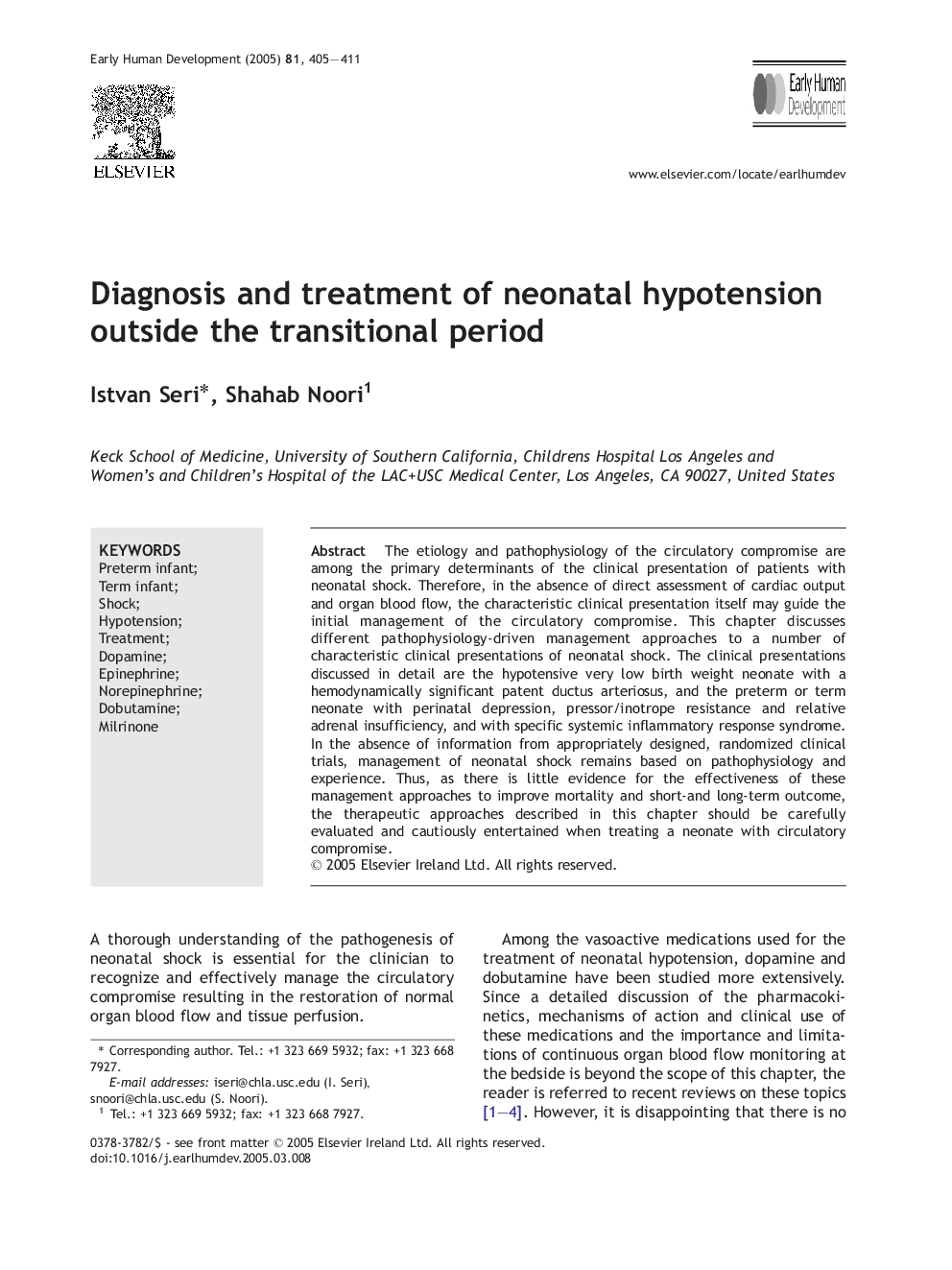| Article ID | Journal | Published Year | Pages | File Type |
|---|---|---|---|---|
| 9318627 | Early Human Development | 2005 | 7 Pages |
Abstract
The etiology and pathophysiology of the circulatory compromise are among the primary determinants of the clinical presentation of patients with neonatal shock. Therefore, in the absence of direct assessment of cardiac output and organ blood flow, the characteristic clinical presentation itself may guide the initial management of the circulatory compromise. This chapter discusses different pathophysiology-driven management approaches to a number of characteristic clinical presentations of neonatal shock. The clinical presentations discussed in detail are the hypotensive very low birth weight neonate with a hemodynamically significant patent ductus arteriosus, and the preterm or term neonate with perinatal depression, pressor/inotrope resistance and relative adrenal insufficiency, and with specific systemic inflammatory response syndrome. In the absence of information from appropriately designed, randomized clinical trials, management of neonatal shock remains based on pathophysiology and experience. Thus, as there is little evidence for the effectiveness of these management approaches to improve mortality and short-and long-term outcome, the therapeutic approaches described in this chapter should be carefully evaluated and cautiously entertained when treating a neonate with circulatory compromise.
Keywords
Related Topics
Health Sciences
Medicine and Dentistry
Obstetrics, Gynecology and Women's Health
Authors
Istvan Seri, Shahab Noori,
